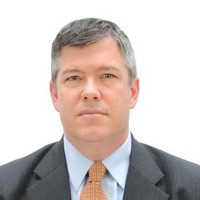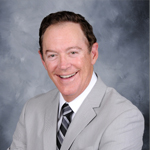How Do You Advise Your Clients
With Sizeable IRAs (and Draft for Them)
After the SECURE Act?
The new “10-Year Payout” rule created by the SECURE Act for inherited IRAs appears on its surface, to be quite simple. But, a deeper dive into this new law reveals great complexity - - both in what planning advice is best for each client and then implementing that planning through trust and beneficiary form drafting.
If you’re an estate planning attorney, and you have clients with IRAs of between $200,000 to $1 million (or more), you will definitely want to join two of the nation’s leading authorities on IRA planning and drafting beneficiary trusts, attorneys Philip J. Kavesh and Ed Morrow, on this timely 2-part teleconference entitled, “What Every Attorney Needs to Know to Advise Clients and Draft Under the SECURE Act”.
On the first 90-minute presentation entitled, “An Advanced-Level Analysis of the SECURE Act”, you will find out:
- What are the “guidelines” now for when IRA beneficiaries should receive distributions outright or in trust?
- If the answer is in trust, what are the “guidelines” for when an accumulation with “spray features” makes sense?
- Should such a spray trust be a part of the IRA owner’s Living Trust or part of a Standalone Beneficiary Trust?
- What should you now do with all of those Standalone Beneficiary Trusts you’ve already drafted? (Revoke or amend them?)
- If you choose to amend an existing Standalone Beneficiary Trust, what key provisions should be changed and how?
- Do IRA Beneficiary Designations Forms now need to be changed and how?
- What are the special considerations and planning options for “eligible designated beneficiaries” who may still qualify for life expectancy “stretch” of RMDs?
- For EDBs, should you use conduit, accumulation or some type of hybrid trust?
- How does the “ghost life expectancy” rule now work and when would it be better than the 10-year rule? (And how can you take advantage of it?)
- What additional questions have been left unanswered by the SECURE Act that you need to plan for?
The second 90-minute presentation, is entitled, “The Traps & Tricks of Drafting IRA Trusts & Beneficiary Forms After the SECURE Act”. During this presentation, you will learn:
- How do you draft an accumulation trust to both maximize income tax savings and asset protection?
-
- Using discretionary “HEMS” language with special “directions”?
-
- Using Limited Powers of Appointment, with special “directions?”
-
- What about adding “BDOT” withdrawal powers?
- For any beneficiaries that may still qualify for stretchout, how do you draft “EDB sub-trusts” to achieve maximum tax savings and asset protection?
-
- What are the special multiple beneficiary trust rules you need to address and how?
- What other beneficiary trust provisions now need to be revised and how?
- What special “flex” provisions (such as “Trust Protector” and “Toggle Switch” language) should you now put in a Living Trust or standalone Beneficiary Trust to adapt to later IRS guidance, as well as changed circumstances and needs of individual beneficiaries?
- How should your clients update their BDF forms?
- And much more, including some helpful model trust and form language!
This 2-part series will be chock full of practical, “down-in-the-trenches” information that you will able to use right away in your practice to better service your clients.
Your purchase includes: Downloadable PDF handout materials and MP3 audio recordings. A PDF transcript may be added on for an additional fee during the checkout process.
- Program Title: What Every Attorney Needs to Know to Advise Clients and Draft Under the SECURE Act
- Speaker: Edwin P. Morrow III, Philip J. Kavesh
- Duration: 90 minutes
Purchase
ABOUT THE SPEAKER
Edwin P. Morrow III
J.D., LL.M., MBA, CFP®, CM&AA®

Ed is currently an Attorney at Kelleher + Holland, LLC. He is a legal professional with a distinguished background in tax law, having transitioned his focus to specialize in estate planning and trust law. Holding the prestigious designation of Certified Mergers and Acquisitions Advisor®, Edwin also serves as a non-public FINRA arbitrator and holds the esteemed position of Fellow at The American College of Trust and Estate Counsel. Renowned nationally, Edwin is among the most sought-after experts in the field, known for his depth of knowledge and expertise. He co-authored the acclaimed publication, “The Tools & Techniques of Estate Planning,”…
Philip J. Kavesh
J.D., LL.M. (Taxation), CFP®, ChFC, California State Bar Certified Specialist in Estate Planning, Trust & Probate Law

Philip J. Kavesh is a nationally recognized attorney, authority, speaker, educator and technical innovator in estate planning. Phil has earned significant recognition and accolades over his approximately 40 years of practice as an estate planning attorney. Phil holds a Master’s Degree (LL.M.) in Tax Law and is a California State Bar Certified Specialist in Estate Planning, Trust and Probate Law. He also has been awarded the Certified Financial Planner and Chartered Financial Consultant designations. Phil has served his fellow estate planning and financial professionals by teaching in the Golden Gate University Graduate Tax Degree and Certified Financial Planner programs. Phil…
IMPORTANT NOTICE REGARDING CE CREDIT
The Ultimate Estate Planner, Inc. and the presenter are not registered Continuing Education Sponsors and this program is not pre-approved for continuing education credit for any state or regulatory agency.
However, please note that each program includes a Certificate of Completion and, depending on the license and the regulatory agency for which governs a participant’s CE credit, some professionals may be able to self-report his or her participation and receive credit. It is the responsibility of the participant to complete any process necessary to seek self-reported CE credit for his or her participation. By registering for a teleconference (or purchasing on On-Demand program), you understand that CE credit is not guaranteed or warranted by the presenter or The Ultimate Estate Planner, Inc.
